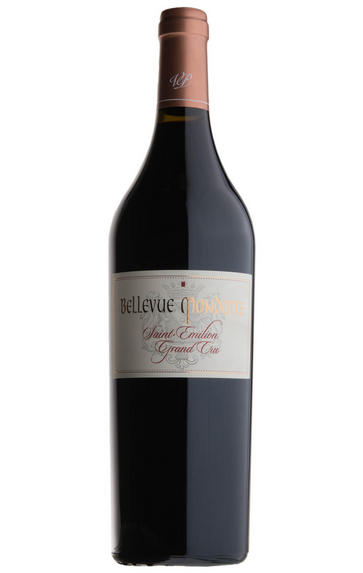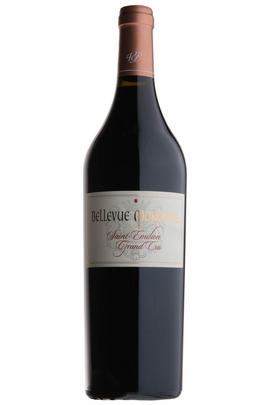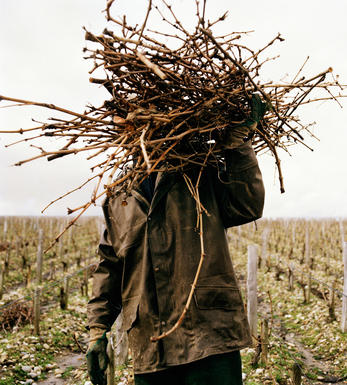
2006 Château Bellevue Mondotte, St Emilion, Bordeaux

Critics reviews
Robert M. Parker, Jr. - 25/02/2009
About this WINE

Bellevue Mondotte
Chateau Bellevue Mondotte is a tiny, 2-hectare wine property on the limestone plateau of St Emilion, bought in 2001 by Gérard Perse, owner of the celebrated premier Grand Cru Classé Ch. Pavie.
Merlot comprises over 90% of the blend with a dash of both Cabernet Sauvignon and Cabernet Franc. The vineyard faces south at an altitude of 80 metres above sea-level, and the average age of the vines is 45 years.
The wine falls very much into the garagiste camp, being aged in 100% new oak and produced from tiny yields of 15-20 hectolitres per hectare.
Michel Rolland is the consultant oenologist. After 6 months ageing on its lees the wine remains in barrel for a further 18 months before being bottled unfiltered and unfined.

St Émilion
St Émilion is one of Bordeaux's largest producing appellations, producing more wine than Listrac, Moulis, St Estèphe, Pauillac, St Julien and Margaux put together. St Emilion has been producing wine for longer than the Médoc but its lack of accessibility to Bordeaux's port and market-restricted exports to mainland Europe meant the region initially did not enjoy the commercial success that funded the great châteaux of the Left Bank.
St Émilion itself is the prettiest of Bordeaux's wine towns, perched on top of the steep limestone slopes upon which many of the region's finest vineyards are situated. However, more than half of the appellation's vineyards lie on the plain between the town and the Dordogne River on sandy, alluvial soils with a sprinkling of gravel.
Further diversity is added by a small, complex gravel bed to the north-east of the region on the border with Pomerol. Atypically for St Émilion, this allows Cabernet Franc and, to a lesser extent, Cabernet Sauvignon to prosper and defines the personality of the great wines such as Ch. Cheval Blanc.
In the early 1990s there was an explosion of experimentation and evolution, leading to the rise of the garagistes, producers of deeply-concentrated wines made in very small quantities and offered at high prices. The appellation is also surrounded by four satellite appellations, Montagne, Lussac, Puisseguin and St. Georges, which enjoy a family similarity but not the complexity of the best wines.
St Émilion was first officially classified in 1954, and is the most meritocratic classification system in Bordeaux, as it is regularly amended. The most recent revision of the classification was in 2012

Merlot/Cabernet Franc
Merlot and Cabernet Franc are grape varieties commonly used in Bordeaux-style blends, particularly in the Bordeaux region of France. When these two grapes are blended, they can create a wine that combines the best characteristics of each variety.
Merlot is known for its smoothness, soft tannins, and ripe fruit flavours. It often contributes black cherry, plum, and chocolate flavours to the blend. The grapes are relatively easy to grow and ripen earlier than other Bordeaux varieties, making them versatile for blending.
Cabernet Franc, on the other hand, adds structure, depth, and complexity to the blend. It typically brings aromas of red fruits such as raspberry and strawberry, along with herbal notes like bell pepper and tobacco. These grapes have thinner skins and can be more challenging to cultivate, requiring specific growing conditions to reach their full potential.
When Merlot and Cabernet Franc are combined, the result is a well-balanced wine with various flavours and aromas. The blend often exhibits a Bordeaux wine's medium to full body, along with a smooth texture and moderate tannins. The specific flavour profile can vary depending on the proportions of each grape in the blend and the terroir and winemaking techniques employed.


Buying options
Add to wishlist
Description
This tiny, 5-acre vineyard with nearly 50-year old vines produces only 4,000 bottles from a blend of 90% Merlot and 10% Cabernet Franc. The broodingly tannic, backward 2006 is remarkably concentrated, pure, and deep. It is an amazing tour de force in winemaking, but like nearly all the Perse 2006s, it is a massively built vin de garde with no compromises meant for serious connoisseurs and long-term cellaring. Forget it for 7-8 years, and drink it over the following 25-30.
Robert M. Parker, Jr. - 25/02/2009
wine at a glance
Delivery and quality guarantee